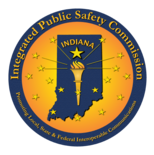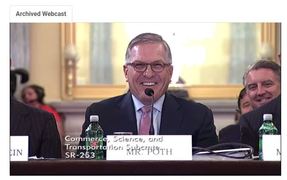
Welcome to the August issue of The Indiana FirstNet Connect, an
e-newsletter to share developments related to FirstNet and the deployment of
the planned, Nationwide Public Safety
Broadband Network (NPSBN).
|
The
IPSC team spent much of June and July evaluating FirstNet’s Indiana State Plan. We traveled the state
and held 10 district meetings to gather local input. More than 450 public safety and emergency management
professionals across Indiana participated in state plan review meetings, and
nearly 250 individuals provided input on coverage via an online survey.
Additionally, workgroups comprised of local and state first responders took a deep look into specific parts of the
State Plan and prepared checklists to use in the
evaluation of the State Plan.
We recorded and compiled
your feedback and provided FirstNet
with a comprehensive response to the State Plan. Many
of the comments focused on coverage, but we also addressed devices,
applications, rate plans, costs and network security – among other areas – all
from the perspective of Indiana first
responders.
We could not have achieved the submission of our state’s
comprehensive response without your participation. We thank you and greatly appreciate the time
you took to make sure we carefully considered the information provided and how
it ultimately may impact the tools available to us as public safety
professionals.
Sincerely,
David Vice, Indiana Single Point of Contact (SPOC) & IPSC
Executive Director

As 14 states and 1 territory (Virginia, Wyoming, Arkansas, Kentucky,
Iowa, New Jersey, West Virginia, U.S. Virgin Islands, New Mexico, Michigan, Maine, Montana, Arizona, Kansas, Nevada) announce they have opted into the
FirstNet network, the NGA released questions and answers regarding FirstNet and
its implications for states and governors across the country as they decide
whether to opt in to the network.
Two of the questions relevant to local communities are listed
below. The full document may be found here.
Q. If Band 14 reaches capacity for public safety
usage during an emergency, will AT&T/FirstNet allow prioritization on other
spectrum to accommodate need?
A. Yes. AT&T is offering priority and preemption
for FirstNet users on Band 14 as well as on all of its existing commercial LTE
bands.
Q. What effect will the AT&T and FirstNet
contract have on local jurisdictions over the 25-year term of contract?
A. …Local jurisdictions will have another choice
for wireless broadband services bringing more competition to the market. Importantly, responders will have access to a
dedicated public safety network with priority and preemption services, a device
and application ecosystem, and other public safety-specific capabilities. In addition, with a 25-year contract and
plans for reinvestment, the FirstNet solution provides public safety agencies with
the certainty that the network will endure and evolve to meet both their near-term
and long-term needs.
|
 FirstNet
CEO Michael Poth (pictured) speaking to the subcommittee. CSPAN
(2017). Commerce, Science and Transportation Sub-Committee Hearing [Image].
https://www.c-span.org/video/?431573-1/senators-receive-update-emergency-response-broadband-network&start=1712
The U.S. Senate Commerce, Science and Transportation Subcommittee on Communications, Technology, Innovation & the Internet convened their annual oversight hearing on the progress of FirstNet on July 20th. The hearing called five representatives to testify, including practitioners from Virginia and Mississippi, the GAO, Michael Poth of FirstNet and Chris Sambar from AT&T.
The most resounding message was the call for adequate rural coverage, a topic discussed from multiple points of view during the hearing. The Subcommittee demonstrated knowledge and sophistication around the technology, bringing up a variety of insightful comments, issues and questions.
Topics included: public safety hardening, Identity, Credential and Access Management (ICAM), tribal engagement resources, deployables, contract accountability, timeliness of FirstNet answers, leveraging existing infrastructure, the importance of Band 14 and all aspects of coverage, including coverage over water, indoors and underground. The Senators seemed particularly pleased that the FirstNet program is running ahead of schedule, noting “maybe you could help out the DoD.”
In one of the more eloquent statements, Dr. Damon Darsey, University of Mississippi Medical Center, challenged public safety to embrace telemedicine advantages to save lives by preparing trauma centers, getting patients there faster and getting urgent care to remote rural areas. Dr. Darsey concluded his impassioned speech with, “The possibility of FirstNet is to provide the resources to allow local public safety officials to push the boundaries of possibilities…”
For video and transcripts of the session:
https://www.c-span.org/video/?431573-1/senators-receive-update-emergency-response-broadband-network&start=799
This newsletter was sent to law enforcement stakeholders, public safety leaders, and local elected officials who have interacted with IPSC, and/or attended past conferences or meetings with IPSC. Our staff respects your time (and your inbox) so we will not send emails or information unnecessarily. If at any time you would like to opt-out of our communications, please do so by clicking 'Manage Preferences' at the bottom of our newsletter.
|